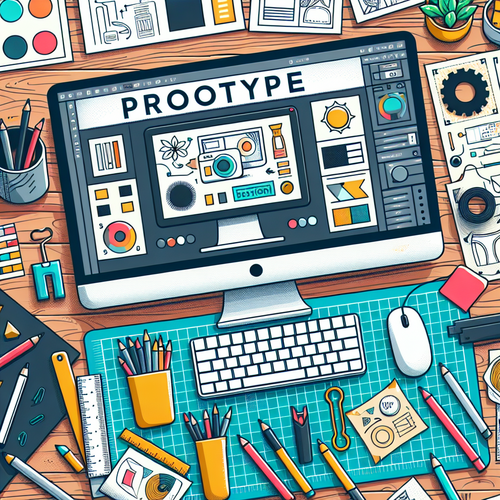
Top 5 Free Tools for Creating Mockups
Top 5 Free Tools for Creating Mockups
Creating mockups is an essential part of the design process, allowing designers and developers to envision how their products will look and function before any coding begins. In this guide, we will explore the top 5 free tools for creating mockups, complete with step-by-step instructions for getting started. With these tools, you can create professional-quality mockups without spending a cent!
Prerequisites
- A computer or device with internet access.
- A basic understanding of design principles.
- Creativity and an eagerness to learn.
1. Figma
[Figma](https://www.figma.com) is a web-based design tool that is widely used for creating user interface mockups, collaboration, and prototyping. Its intuitive interface makes it easy for both beginners and experienced designers to create stunning designs.
How to Use Figma for Mockups
- Sign up for a free account on the Figma website.
- Create a new file and select the device frame you want to mock up.
- Use the shape tool to create buttons, input fields, and other UI elements.
- Employ the components system to reuse elements throughout your mockup.
- Export your design as PNG, JPG, or PDF.
2. Adobe XD
[Adobe XD](https://www.adobe.com/products/xd.html) offers a free starter plan that provides you with powerful tools to create interactive mockups. As part of Adobe’s suite, it’s great for those who are already familiar with Adobe products.
How to Use Adobe XD for Mockups
- Download Adobe XD and create an Adobe account.
- Open a new project and select ‘Web’ or ‘Mobile’ template.
- Drag and drop shapes, images, and text to build your mockup.
- Utilize the repeat grid feature to speed up the layout process.
- Share your project directly or export assets for development.
3. Sketch (Free Trial)
Sketch provides a free trial that can be utilized to create stunning mockups specifically for macOS users. It is highly favored in the design community for its precise vector editing capabilities.
How to Use Sketch for Mockups
- Download and install the Sketch application from its website.
- Start a new project and choose your device type.
- Create artboards for each screen of your application.
- Add design elements using the vector tools and libraries.
- Export your mockup for sharing or further development.
4. MockFlow
[MockFlow](https://www.mockflow.com) is an online tool focused on wireframing, which is key for creating mockups. It allows you to collaborate with your team and clients easily.
How to Use MockFlow for Mockups
- Visit the MockFlow website and sign up for a free plan.
- Create a new project and select a layout template.
- Drag and place elements to build the wireframe of your app or site.
- Collaborate with others and gather feedback within the platform.
- Export or share your designs as needed.
5. InVision
[InVision](https://www.invisionapp.com) offers a free version where you can create interactive prototypes and user testing mockups. Perfect for those looking to get feedback on their designs before development.
How to Use InVision for Mockups
- Sign up for an InVision account on their website.
- Create a new prototype and upload your static screens.
- Add hotspots to link screens and simulate user flow.
- Share your prototype for team review and feedback.
- Refine your mockup based on the feedback received.
Troubleshooting Common Issues
- If you experience difficulty with export formats, ensure you’re selecting the correct option in the settings.
- For collaboration issues, double-check user permissions and share links.
- In case of lag in the application, refreshing or clearing the cache may help.
Summary Checklist
- Choose a tool based on your immediate needs and skills.
- Follow setup steps for creating projects.
- Utilize collaborative features to increase efficiency.
- Test different layouts and elements to enhance your mockup.
- Export and share with stakeholders for feedback.
With the above tools, you can efficiently create impressive mockups that make your design process smoother and more effective. Explore each tool’s unique features and find the one that best fits your workflow. Happy designing! For more design-related insights, check this article on productivity tools!













